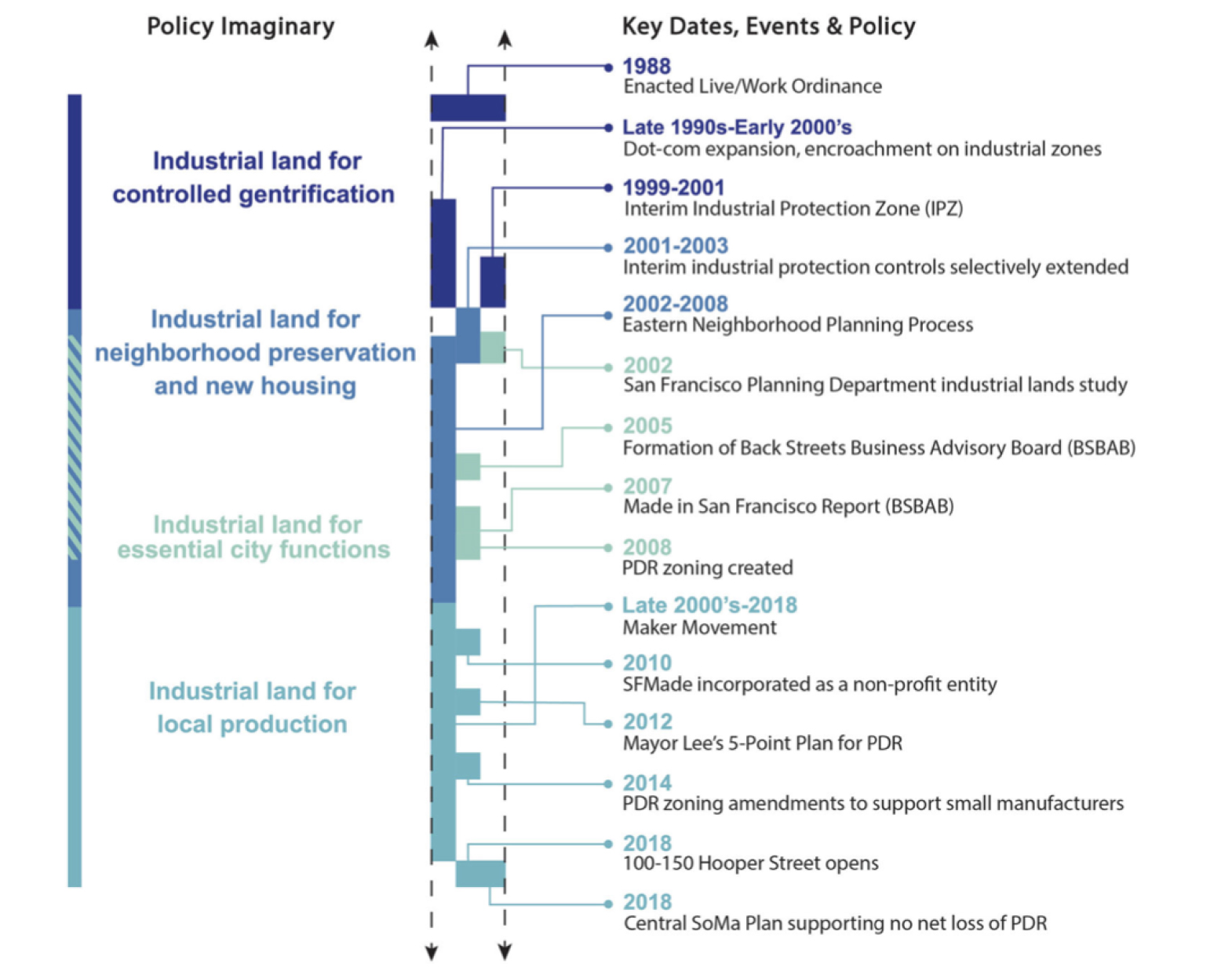Uncovering JAPA
Re-Imagining Urban Industrial Rezoning in San Francisco

For decades, cities have been converting industrial to commercial or residential zones in the name of expanding their tax base, encouraging affordable housing development, or furthering environmental justice. More recently, however, this trend has been tempered by growing recognition of the value of urban manufacturing for economic development concerning entrepreneurship, employment diversity, and sustainability.
San Francisco's Industrial Rezoning Policy Analysis
In "The Institutional Dynamics of Land Use Planning" (Journal of the American Planning Association, Vol. 88, No. 4), Carl Grodach analyzes urban industrial rezoning in San Francisco, an extreme case concerning its limited land area, tech-fueled gentrification, and lack of affordable housing.
In his analysis, Grodach emphasizes the role of formal institutions and local intermediaries as well as policy imaginaries — "narrative frames that policymakers adopt to promote specific interests" — in shaping land use policy in the city.
Grodach analyzed media reports and official documents including neighborhood plans, industry plans, and planning codes from the 1980s to 2018. He also conducted expert interviews with officials from formal institutions like the Office of Economic and Workforce Development and intermediary organizations like SFMade, a nonprofit representing 650 local manufacturers that grew out of the Great Recession.
Grodach identified four dominant policy imaginaries concerning the city's orientation towards industrial land: for controlled gentrification, for neighborhood preservation, for essential city functions, and local production (see Figure 2).

Figure 2. Timeline of key industrial planning milestones in San Francisco.
Industrial Rezoning Policy Dynamics
In the first imaginary, the city "stipulated where certain types of industrial operations could locate but did not prohibit competing uses." As such, industrial uses were outcompeted by more lucrative commercial and residential uses. Developers also exploited an amendment legalizing artist residences "to build market-rate live-work units."
In the second imaginary, responding to displacement related to the dot-com boom, the city adopted the Eastern Neighborhood Plans in 2008, which introduced new Production, Distribution, and Repair (PDR) and Urban Mixed-Use (UMU) zones. Whereas UMU allowed residential, commercial, and industrial uses, PDR prohibited residential uses and restricted commercial uses.
In the third imaginary, as epitomized by the Back Streets Business Advisory Board's 2007 Made in San Francisco report, the city emphasized the importance of hidden industrial activity for essential city functions.
In the fourth imaginary, responding to SFMade's advocacy for "a specifically urban brand of manufacturing defined by small, specialty production," the city amended PDR zoning in 2014 to permit shared retail space and allow larger, multi-tenant workspaces.
COVID-19 Prompts Industrial Rezoning Rethink
While Grodach predicts that the depressive effect of the COVID-19 pandemic on calls for industrial rezoning will be short-lived in cities like San Francisco, he suggests that the pandemic "may nonetheless provide a critical juncture to again rethink industrial lands as fractured global supply chains stimulate calls to focus more on domestic production."
While the pandemic has certainly underscored the importance of "onshoring" critical industries, I think it unlikely that such manufacturing will take root in strong market cities with high costs of production. Rather, I worry that small, specialty producers like those of SFMade will be displaced by e-commerce giants, which have been gobbling up Class B and C warehouses in urban areas in the pursuit of ever-faster delivery times.
Top image: iStock/Getty Images Plus - elevationare


